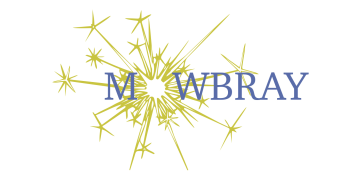When Japanese authorities warned of a possible mega-tsunami within three decades, they turned to an unconventional mitigation strategy: educating children.
Pupils in Kamaishi, on Japan’s eastern coast, were trained in emergency response and taught the principle of tsunami tendenko – the reformulation of an ancient code which states that each person must save themselves by avoiding assumptions, being active in their response and taking the lead.
When the tsunami struck in 2011, 600 students defied official evacuation routes, repeatedly assessing the threat, and moving to higher ground. By the time their officially designated shelter was swept away, they had already saved themselves and many adults around them.
The government recently launched a Resilience Action Plan, initiating a much-needed national conversation on resilience.
It’s a response to the increasingly complex environment we are living in, coined by experts as ‘Turbulent, Uncertain, Novel and Ambiguous’.
A darkening geopolitical outlook has combined with emerging new threats, enabled by new technologies.
Yet children – the very citizens who will have to navigate the most transformative period in human history – are almost entirely absent from this discussion.
The same government that intends to lower the voting age to 16 offers no systematic preparation for the volatile world these new citizens will inherit.
Other nations already show what is possible.
Finland treats education as part of collective civil defence, integrating resilience training from primary school through the workplace.
Secondary school students learn crisis preparedness, information literacy and the “72-hour concept” that ensures households can cope during emergencies.
In maths they study statistical deception, in art image manipulation, in history propaganda campaigns. This creates citizens equipped with the skills to resist disinformation and adapt to crises.
Iceland’s ‘Education Policy 2030’ explicitly centres on ‘resilience, courage, knowledge, and happiness’.
These aren’t add-ons, they’re foundational educational values. Rooted in these principles, the policy ensures that everyone can grow and strengthen their competencies, essential for delivering high-quality education.
By contrast, the UK’s resilience efforts lean heavily on the Prepare campaign, centred on a website offering adults guidance on basic emergency steps. While a useful tool, it targets a limited audience.
Children remain unprepared. Retrofitting resilience skills after crises strike is far less effective than building them systematically throughout childhood.
We have two clear pathways forward.
We could tackle this problem through the existing PSHE provision. Resilience could be built systematically through dedicated lesson time – moving from simple explorations of building emotional resilience to the complex ideas around extreme risk preparedness, cyber threats and democratic manipulation by the end of a child’s school career.
Alternatively, we could map resilience themes across existing subjects to exploit the benefits of concurrent learning.
Statistics lessons could teach bias identification and AI system evaluation, geography could cover disaster preparedness and biosecurity threats, with history examining propaganda and information warfare. Meanwhile, science could explore pandemic preparedness, dual-use research risks, and responsible technology development.
The outcome of either approach could be a child that revisits concepts with growing sophistication and leaves school with an understanding of their personal and public role in national resilience.
Critics will rightly point to curriculum pressures and ask where the time will come from.
This makes the integrated approach appealing, embedding resilience without adding new subjects.
Teachers may worry about their preparedness to teach such content, but this is a familiar challenge – whether in digital literacy or mental health support – and not a reason to delay.
Resources, training, and phased implementation can be developed in parallel with initial teaching.
The pandemic exposed our vulnerabilities more starkly than any recent event. Yet we have failed to embed its lessons into the curriculum.
I trained as a teacher during that period and witnessed children’s adaptability, creativity and resilience firsthand. They may have been underprepared, but their energy and capacity to respond proved remarkable.
We now face a choice: continue focusing preparedness efforts on anxious adults, or build resilience into every child’s education.
Japan proves it saves lives. Finland shows how to do it. Iceland shows it can be foundational.
Let’s learn from other countries, and equip our young people to deal with the world as it is, just as much as we encourage them to shape it into the world they want it to be.












Your thoughts